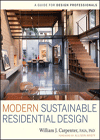But by the late 1980s, President Ronald Reagan had slashed community development funding. The solar panels went away, not to be seen again until the Obama Administration. Architecture schools turned back to formalism and theory. “There were some professors who had been involved in the '70s, but I think they were all embarrassed about their bell bottoms and didn't want to bring it up,” says Bryan Bell, founder and executive director of the nonprofit Design Corps, who was getting his master's at Yale University's School of Architecture at the time.
Social concerns stayed alive in the 1980s and '90s through organizations like Architects for Social Responsibility (now known as Architects/Designers/Planners for Social Responsibility), an anti-nuclear-proliferation advocacy group Polshek founded in 1981 with the late architect Sidney Gilbert. CDCs did not altogether disappear, though their numbers diminished.
In our own time of growing humanitarian crisis, global climate change, and mounting concern over income inequality, activist architects are no longer relegated to the field's fringes. April marked the fifteenth anniversary of Architecture for Humanity (AFH), which has grown from a shoestring outfit founded by Cameron Sinclair and Kate Stohr in 1999 to an international organization with 59 chapters in sixteen countries. The San Francisco–based nonprofit Public Architecture, now 12 years old, tracked nearly $50 million in pro bono design services given in 2013 through its influential 1% Program. Last year, the Portland State University School of Architecture launched a public-interest-design research center, and the University of Minnesota College of Design will follow suit this year with new undergraduate and master's certificates in public-interest design. If the National Design Services Act makes it out of committee and passes in Congress, architecture students will be able to reduce the balance owed on their loans by going to work in CDCs.
All this activity has bubbled up to the higher echelons of the American Institute of Architects, which in 2011 awarded the Latrobe Prize to a study of public-interest practices, and, of course, the Pritzker jury, which this year honored Shigeru Ban more, it is said, for his innovative paper-tube post-disaster structures than for the deflated-mushroom form of his Centre Pompidou outpost in Metz. At this month's national convention in Chicago, the AIA will launch the AIA Foundation, a new philanthropic branch that will offer training in disaster-resilient building techiques and underwrite projects incorporating them—the first time in the AIA's history that it will fund the construction of anything. A century and a half after the birth of the field of public health and 50 years after the institution of public defenders, architecture is beginning to move beyond the old-fashioned patronage model and grope its way toward a truly public architecture.
Since founding Public Architecture in 2002 and launching the 1% Program—which asks firms to dedicate 1 percent of their annual billable hours to pro bono projects—John Peterson has seen this type of participation become the norm, not the exception. “Now we're hitting a purely financial barrier,” he says.
Funding remains the core problem of turning socially conscious architecture into a self-sustaining discipline. In purely mathematical terms, 1 percent of the resources that serve the minority of the population who can afford an architect do not go far in addressing the needs of the majority. But Peterson views pro bono as a sales pitch directed at the nonprofit sector, which, he says, tends not to see architecture's relevance to its humanitarian mission. “Pro bono is a gateway drug,” he says. “If we do a good job serving that community, they'll start paying for it.”
For the nonprofit Architecture for Humanity, which coordinates long-term disaster responses in addition to funneling grants to smaller, community projects through its chapters, the perennial question is how to address humanitarian crises at a meaningful scale. “The forces of mass urbanization and climate change are on a collision course,” says Eric Cesal, director of AFH's reconstruction and resilience studio. “We're trying to change our philosophy so that we're preventing the effects of disaster, disinvestment, and poverty, as opposed to reacting to crisis.”
As a first step in this direction, the new AIA Foundation, in partnership with AFH and Public Architecture, among others, is forming five regional resilience design studios in the United States. With a staff architect based at each one—in New York; Washington, D.C.; Biloxi, Mississippi; the San Francisco Bay area; and a Midwestern city to be announced—the initiative will help communities identify weaknesses in their disaster infrastructure and build teams of local architects to work on projects. The studios will recruit volunteers from the rosters of Public Architecture, AFH, the AIA, and architecture schools. “Between the three organizations, we have most of the architects covered in the U.S., and we can benefit from each other's reach,” says Sherry-Lea Bloodworth Botop, executive director of the AIA Foundation.
This emphasis on building a network of architects whose local expertise can be tapped for civic-minded projects reflects a broad shift among nonprofits from the full-service mode of traditional practice. In its early years, Public Architecture operated more like a typical firm. The architects designed a sheltered gathering place for day laborers and, in San Francisco in 2005, exhibited a house built entirely from castoffs, repurposing phone books as insulation and fire hoses as wall panels. But Peterson and his staff soon realized that substantial impact would always elude them if they kept approaching social issues with a portfolio mindset. Now they influence more projects by helping foundations and nonprofits develop concepts and select and manage design teams, which then carry out the work. Under the guidance of Public Architecture, WRNS Studio and GLS Landscape | Architecture recently developed prototype strategies to help Alameda County, California, adapt underused space in fire stations as neighborhood health clinics.
Increasingly, public-minded architects are thinking like economists, widening their focus beyond buildings themselves to the communities they support. In Ishinomaki, Japan, which lost 1,800 businesses in the 2011 earthquake and tsunami, AFH's program coordinators realized they could have the greatest impact by rebuilding the town's food markets and fish-processing plants.
Restoring livelihoods gave residents a way to stick around long enough to rebuild the rest of the community. “People asked, 'Why are you working on businesses when so many people are homeless?'” says Cesal. But AFH's analysis found that aiding businesspeople through training programs and reconstruction would help draw investment back to a town that some considered too far gone to save. Three years on, he adds, “the coolest effect we've noticed is young people moving to Ishinomaki.”
In the Rwandan village of Kayonza, the nonprofit Women for Women International adopted a similar approach in a recent collaboration with Sharon Davis Design. The new Women's Opportunity Center, which opened in June 2013, teaches war survivors to cultivate and market agricultural products.
This attention to the well-being of populations reminds Thomas Fisher, dean of the University of Minnesota College of Design, of the rise of public health in the Civil War era, when doctors began to realize that sanitation and other disease-control measures could mitigate the spread of infections in a way that simply treating the illnesses of individual patients never would. Like public health before it, “public-interest design is going to eventually break off from architecture to become a parallel field,” he says. “It's not about designing a building. It's maybe about designing a system or a mass-customizable process.”
If public architecture is becoming part social science, it will find its legitimacy in data. Many practitioners warn that without post-occupancy research to demonstrate the return on investment from good design, the field will have a hard time attracting funding. But research itself costs money. AFH received grants to study the impact of its rebuilding programs on construction quality in Haiti, for instance. But in general, says senior program manager Michael Steiner, “We don't have the funding to pay for research.”
Fitting, then, that the first architects to crack this catch-22 work in health care, a sector that already collects data on its outcomes. The nonprofit practice MASS Design Group is well known for reducing infection rates in its Butaro District Hospital in Burera, Rwanda, by designing the building around airflow. But when MASS cofounders Michael Murphy and Alan Ricks began working on the project for the health-care nonprofit Partners in Health in 2008, their methods were unproven, so they donated their design services. Patient data supported their approach, and the firm added doctors' housing to the Butaro campus in January 2012, as well as an ambulatory cancer center in August 2013. Now MASS has ongoing projects in 10 countries, including a cholera treatment center that will open in Haiti this fall. The firm is working on ways to test design's effect on other outcomes, such as maternal mortality rates or economic development. “There's a whole field of evidence-based design emerging,” says Murphy. For Peterson, research data are the key to social design's staying power. “What we need to do is provide real, hard identifiable value,” he says, “or we'll be subject to the swings of public opinion.”
















